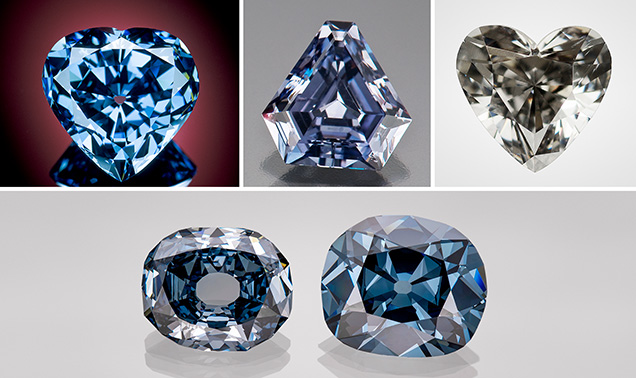
Lab-Created Diamonds vs. Genuine Diamonds: Essential Information
Lab-created diamonds and genuine diamonds may appear identical to the untrained eye, yet their origins, worth, and ethical implications reveal stark contrasts. One forms deep within the Earth over countless ages, while the other is synthesized in a lab in just weeks. With advancing technology and changing consumer desires, recognizing the distinctions between these diamond varieties is vital now more than ever.
Whether you are searching for an engagement ring, a meaningful present, or simply exploring the future of fine jewelry, this guide will assist you in making an educated choice.
What Are Lab-Created Diamonds?
Lab-created diamonds, often referred to as synthetic or engineered diamonds, are produced in controlled laboratory conditions utilizing cutting-edge technology. These diamonds consist of the same substance—pure carbon crystallized in a uniform 3D structure—as their natural counterparts.
There are two primary techniques for creating lab-created diamonds:
1. High Pressure High Temperature (HPHT): This method simulates the natural environment in which diamonds originate in the Earth’s mantle.
2. Chemical Vapor Deposition (CVD): This approach breaks down carbon-rich gases to deposit carbon atoms onto a substrate, slowly forming a diamond crystal.
Despite being man-made, lab-created diamonds are chemically, physically, and optically indistinguishable from natural diamonds. They can be manufactured within days or weeks and often lack the inclusions and flaws commonly found in natural stones.
What Are Genuine (Natural) Diamonds?
Genuine diamonds are formed over millions to billions of years under extreme heat and pressure approximately 100 miles below the Earth’s surface. They are brought to the surface through volcanic activity and are mined from the Earth.
Each natural diamond possesses unique inclusions and characteristics that narrate its geological history. These diamonds undergo cutting, polishing, and grading before they are sold in the global marketplace.
Due to their scarcity and natural formation, genuine diamonds are frequently regarded as more traditional, embodying luxury, romance, and lasting significance.
Major Differences Between Lab-Created and Natural Diamonds
Although lab-created and natural diamonds may seem alike, several significant differences differentiate them:
1. Origin:
– Lab-created diamonds are synthesized in a laboratory within weeks.
– Natural diamonds develop deep within the Earth over billions of years.
2. Composition:
– Both types consist of carbon and possess identical physical and chemical properties.
3. Production:
– Lab-created diamonds are produced using HPHT or CVD methods.
– Natural diamonds are obtained through mining activities.
4. Value:
– Natural diamonds generally maintain their value better over time.
– Lab-created diamonds usually depreciate more rapidly due to greater supply and changing market dynamics.
5. Certification:
– Both varieties can receive certification and grading from accredited gemological organizations such as GIA and IGI.
6. Perception:
– Natural diamonds are often esteemed for their rarity and lineage.
– Lab-created diamonds attract those who value innovation and sustainability.
Appearance and Quality
To the unfocused eye, lab-created and natural diamonds are nearly indistinguishable. Both varieties showcase the same brilliance, fire, and hardness (10 on the Mohs scale). They are evaluated using the same standards: the 4Cs—cut, color, clarity, and carat weight.
Nonetheless, there are subtle variations:
– Natural diamonds may exhibit inclusions developed during their organic growth process.
– Lab-created diamonds might possess fewer inclusions or distinct types of internal features arising from the lab creation process.
These distinctions are typically observable only under magnification and do not compromise the overall beauty or durability of the gemstone.
Price Comparison
One of the most notable contrasts between lab-created and natural diamonds is their cost.
– Lab-created diamonds are usually 30% to 50% less expensive than natural diamonds of comparable quality.
– For instance, a 1-carat lab-created diamond might cost around $1,000, whereas a natural diamond of the same size could range from $4,200 to $10,000 depending on its quality.
This price disparity enables buyers to opt for larger or higher-quality stones within their budget.
Durability and Resale Value
Lab-created and natural diamonds are both resilient and suitable for daily wear. They are equally resistant to scratches and chips, rendering them ideal for engagement rings and other jewelry.
However, their resale value varies:
– Natural diamonds typically retain their value more effectively and can even appreciate over time.
– Lab-created diamonds generally have a lower resale value given their availability and the ease of production.
If long-term investment or heirloom potential is prioritized, a natural diamond may be the preferable option.
Ethical and Environmental Factors
Ethics and sustainability are gaining importance among contemporary consumers. Here’s how the two types compare:
Lab-Created Diamonds:
– No mining necessary, minimizing environmental impact.
– Commonly viewed as a more ethical choice due





